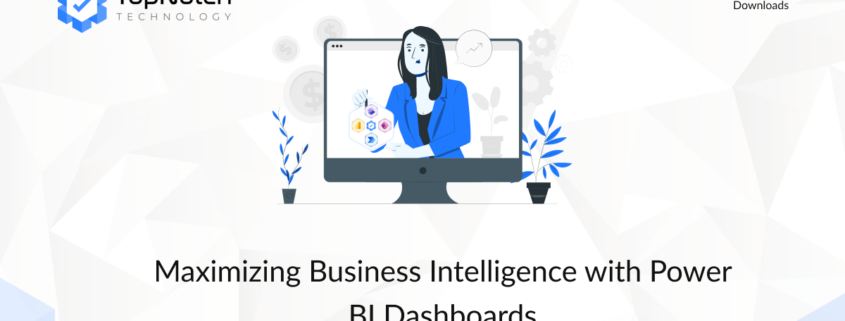Maximizing Business Intelligence with Power BI Dashboards
Introduction: In a world where data drives decision-making, having a centralized, real-time view of your business performance is essential. Power BI Dashboards allow organizations to monitor key metrics, track trends, and make data-driven decisions quickly. This post will explore how Power BI Dashboards can help businesses maximize their business intelligence efforts and create impactful visualizations that deliver actionable insights.
1.1. What Are Power BI Dashboards?
Power BI Dashboards are visual representations of your business’s key metrics, compiled into an interactive and real-time display. These dashboards provide quick access to the data that matters most, from sales figures to customer insights, allowing you to take immediate action.
Key Features of Power BI Dashboards:
- Real-Time Data: Dashboards provide real-time data updates, ensuring decision-makers always have access to the latest information.
- Interactive Visualizations: Power BI Dashboards allow users to drill down into the data for more detailed insights, making it easier to identify trends and anomalies.
- Customizable Layouts: Tailor the dashboard layout to meet your specific needs, whether you’re focusing on sales performance, customer engagement, or operational efficiency.
- Multiple Data Sources: Combine data from multiple sources, such as Excel, CRM systems, and cloud platforms, into one dashboard.
1.2. Benefits of Power BI Dashboards for Your Business
1.2.1. Quick Access to Key Insights
Power BI Dashboards provide a comprehensive view of your key metrics, making it easier for decision-makers to access the information they need without having to dig through multiple reports or systems.
1.2.2. Increased Collaboration Across Teams
With shared dashboards, teams can stay on the same page and collaborate more effectively. Data-driven discussions become the norm, and teams are empowered to make decisions together based on a single, real-time source of truth.
1.2.3. Improved Decision-Making
Having real-time access to critical business data allows decision-makers to act quickly and make informed decisions. This helps businesses stay competitive and respond to challenges in a timely manner.
1.3. Best Practices for Power BI Dashboards
1.3.1. Focus on Key Metrics
When creating a dashboard, focus on the metrics that are most relevant to your business goals. Whether it’s sales, customer satisfaction, or operational efficiency, make sure your dashboard highlights the most critical data points.
1.3.2. Keep It Simple
Avoid overwhelming users with too much data. Keep your dashboard simple and easy to navigate. Use filters, slicers, and drill-down options to allow users to explore data in greater depth when needed.
1.3.3. Ensure Data Accuracy
Ensure that the data being displayed on your Power BI Dashboards is accurate and up to date. Establish processes to ensure that your data sources are constantly refreshed and that the dashboard reflects the latest insights.
1.4. How to Create Effective Power BI Dashboards
Creating a dashboard in Power BI is easy, but creating an effective one requires planning and strategy. Here are the steps to ensure success:
1.4.1. Define Your Goals
Before you start designing your dashboard, define what you want to achieve with it. Are you tracking sales performance? Monitoring customer satisfaction? Clearly define your business goals to ensure your dashboard meets your needs.
1.4.2. Gather Your Data
Next, gather the data that is relevant to your dashboard. This could include sales data, operational data, or any other information that can help inform decision-making.
1.4.3. Design the Layout
Design your dashboard layout with the user in mind. Make sure it is easy to navigate and that the key metrics are clearly visible. Use colors and visualizations to highlight important data points.
1.4.4. Test and Refine
After creating your dashboard, test it with users to ensure it provides the insights they need. Gather feedback and make adjustments as necessary to improve the user experience.
1.5. How TopNotch Technology Can Help with Power BI Dashboards
At TopNotch Technology, we specialize in building custom Power BI Dashboards that deliver actionable insights to your business. Our team of experts will work with you to understand your business needs and design a dashboard that provides the data-driven insights necessary for better decision-making.
To get started with Power BI Dashboards, schedule a consultation with our experts today.
Conclusion
Power BI Dashboards empower businesses to monitor key metrics, analyze data in real-time, and make informed decisions that drive growth and efficiency. By implementing Power BI Dashboards, organizations can enhance collaboration, increase productivity, and stay competitive in the ever-evolving marketplace.
👉 How do you use dashboards to improve your business? Share your thoughts with us!
To learn more about how Power BI Dashboards can help your business, schedule a consultation with our experts today.
